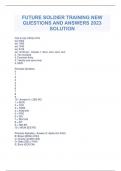Resume
Summary of lectures of Animal nutrition and Physiology + Exam questions
- Cours
- Établissement
- Book
This document is a complete summary of all the lectures from animal nutrition and physiology. After every lecture I made a summary and also some practice exam questions.
[Montrer plus]












